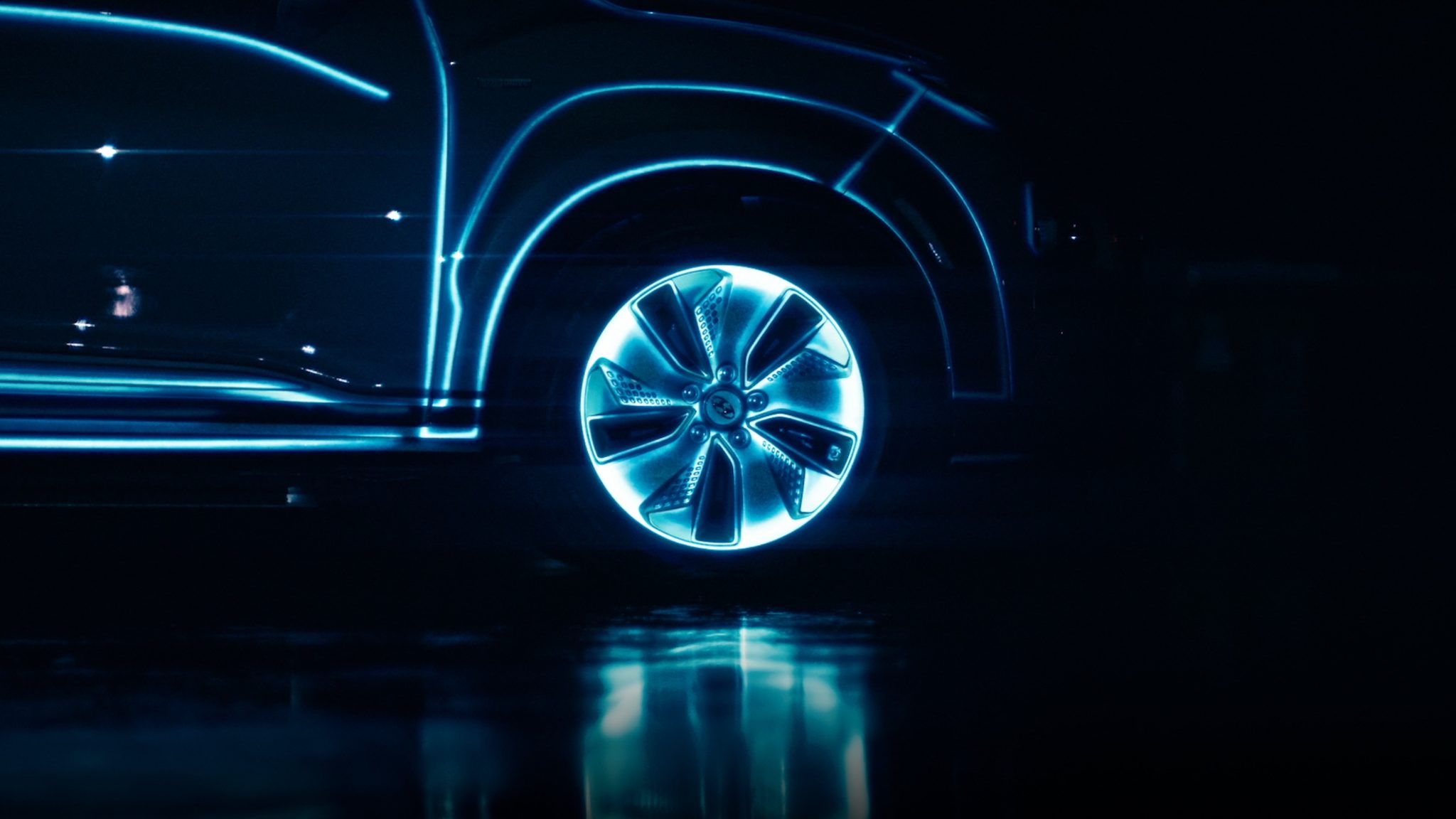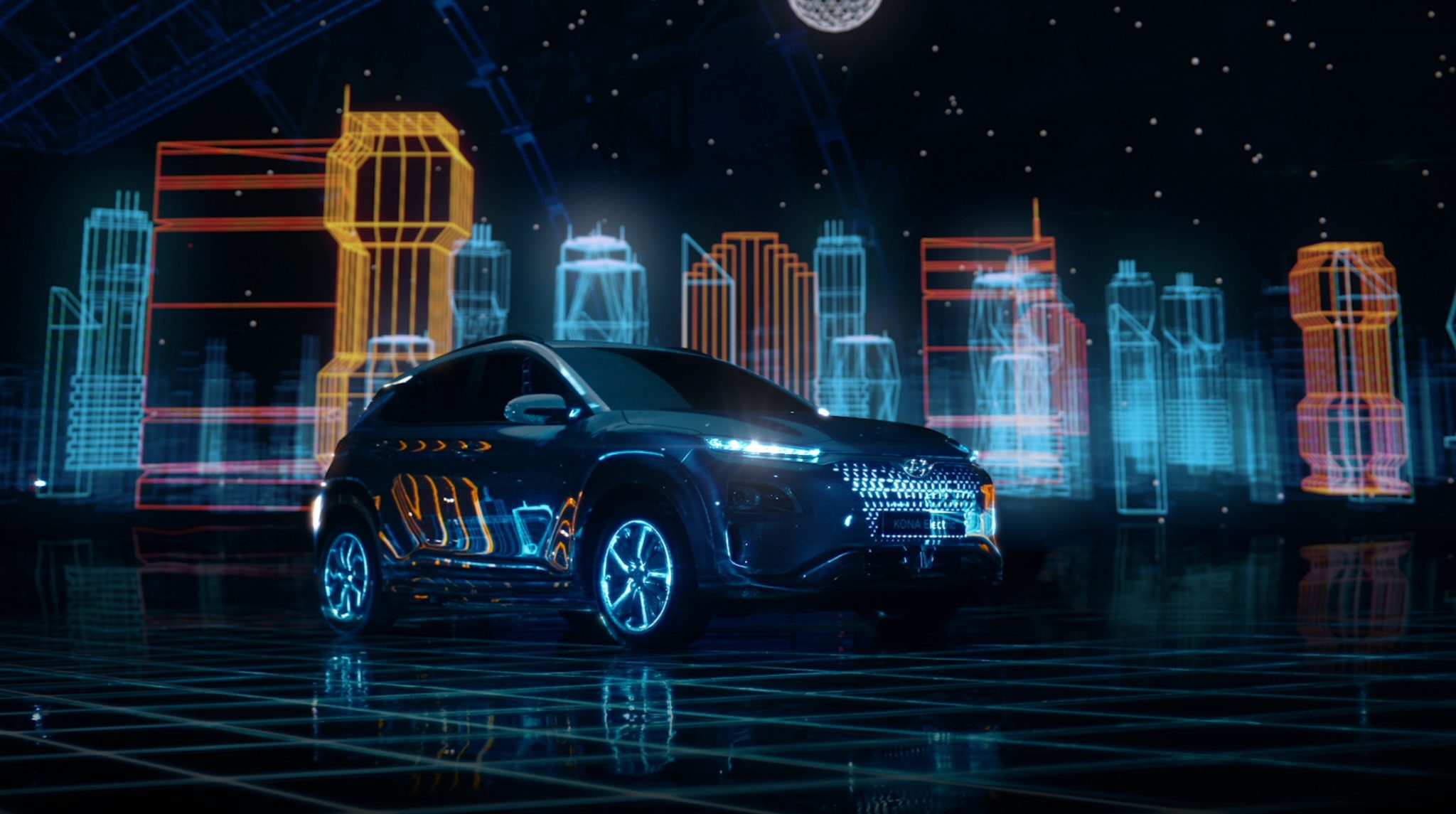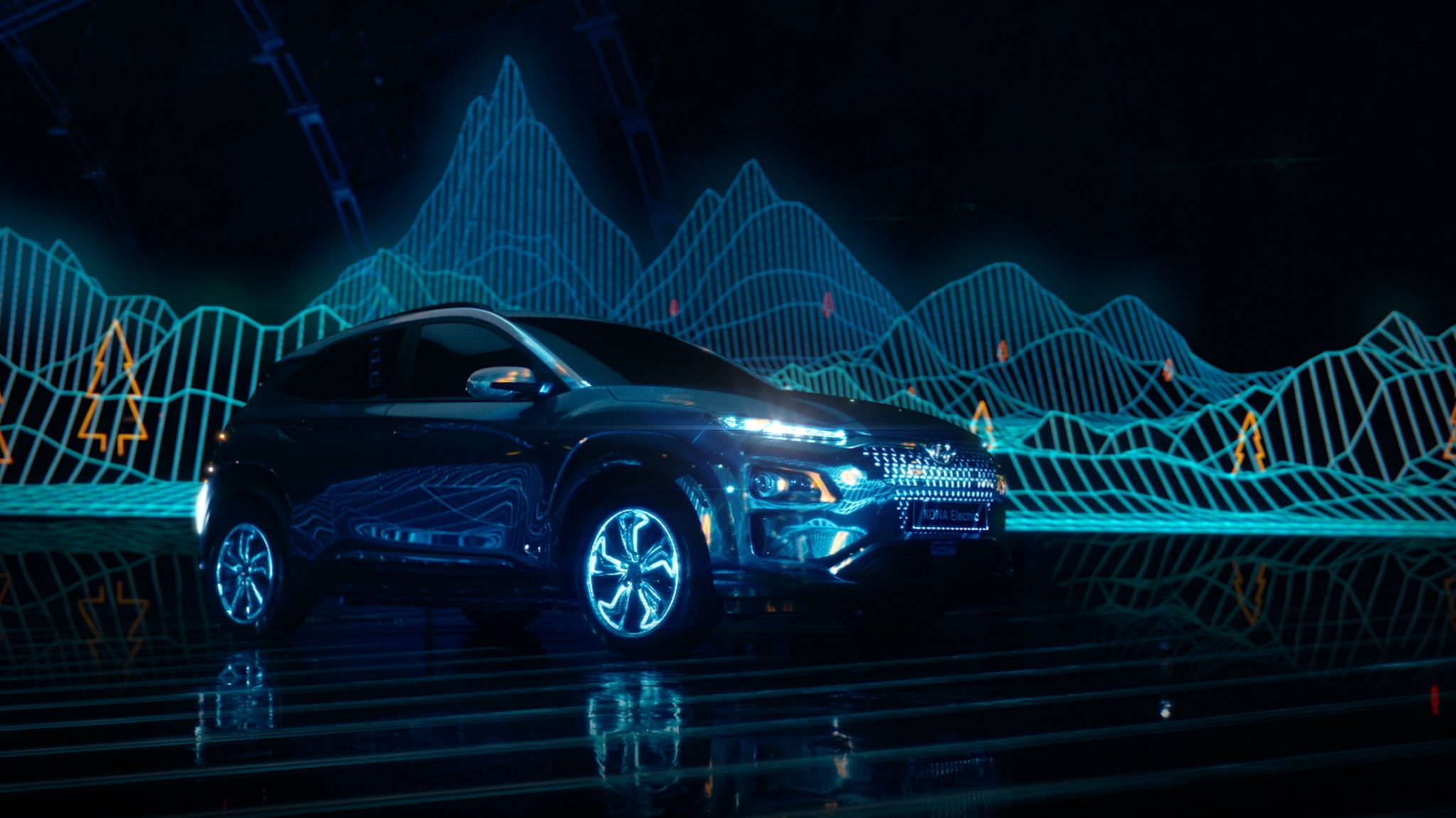Hyundai
Kona EV
CREDITS
Director: Alexander Brown
Client: Hyundai Australia
Creative Agency: Innocean Australia
DoP: Danny Ruhlmann
Producer: Loren Bradley
Art Director: Peter Davies
Projection Mapping: Kit Webster Studio
Editor: Dave Whittaker at Arc
MANAGING DIRECTOR: Edward Pontifex
COLOURIST: Greg Constantaras
Post Production: Heckler
MUSIC: Mika Abadie (Son of Kick)
Production Company: The Sweetshop
Interview
We love your new Kona commercial. Tell us about the core of the film?
Hyundai is launching an entirely electric version of the Kona – so the core of the project was essentially to make a film which demonstrated the key features. I saw this as an evolution of what we have seen before, so the ever popular Mopsters are back – the colourful car wash brushes that came alive in the first and the heroes of two previous commercials: The first, where they follow the Hyundai Kona out of the car wash to continue cleaning it, dancing around it, twerking and bumping and grinding against it as they go. In the second, they’re in hot pursuit of it across the city and into a car park.
But this time, it’s all about the electric features of the Kona and getting that story out into the world. So, everything about this car is Electric and we wanted the commercial to feel equally electric.
How did you approach the film?
When I was briefed about the project, there was a choice to either embrace CGI and do it all in post – OR – try and do it practically. In the end we decided doing things in camera would make for a much more satisfying outcome. I like when you have those limitations – we knew we wouldn’t be shooting in the streets, and we knew that any CGI involving glowing Mopsters would be fiendish to do well in the time we had to complete production.
Tell us about your stylistic technique, how did you pull this off?
I wanted to find a technique which would give us everything at once, with a single technique. I think the best outcomes have a limitation in the approach that you work with. There’s something so much more impressive about in camera effects. But then there’s no point building very technical Mopster costumes – and then rotoscope them into a CGI world. I think once we committed to doing everything in camera, it became apparent that we would need a specific technique to build this ‘electric world’ around them.
We considered a number of options – LED screens, set builds and light setups. But the one that I thought was the most interesting was projection mapping. Projection mapping feels like one of those things that everyone explored back in 2008 and then kinda just moved on from it but looking back at what was made at the time, and to me they always looked like tech demos rather than a technique that had found its stride.
The thing that made this interesting to me to revisit projection mapping, was that we could tell the story of the car was travelling through an ‘electric world’ but we could still have an in-camera look and include the electric Mopsters and have everything playing together at once.
The projectors and the technology has advanced so much since then too – the projectors are so bright we had to turn them down at times. We could project directly onto the car too (instead of having to put the car in a white sock) so the whole approach was quite elegant from a technical standpoint.
If you watch the commercial, at no point does the car actually move, it was locked to one spot. Everything that moves around it is projected. Approaching it this way gave us a great amount of freedom to move around the car with a crane and create shots that you would normally need an army of grips and Russian arms to achieve.
The real challenge of a job like this, is that you end up having to do the post production in the pre-production stage. In the same way that you might build a whole street set for a scene – but perhaps see 10% of it on screen in the final edit – Instead of making the CGI for a three-second edit, you need to craft a 10-second sequence to give the crew enough time to shoot it. It meant we had to design the “world” that the car would travel through in advance, because the projection map would generate the reflections within the bodywork of the car.
The moment the lights dip it’s as if the audience dives into a different world. What were you trying to create here?
I think this idea of having a family car that is completely electric – it feels like something from the Jetsons – it’s very futuristic. I wanted to make a film which reminded people of how forward thinking and ambitious this kind of car is. We’re so familiar with car commercials – a car gliding along a pacific highway or through an urban jungle – but with this I wanted to remind people of that flavour of the fantastical and the futuristic. I wanted to make people feel excited about this car.
The colors are electrifying, what was your thinking here?
It was always really important to me that the whole spot felt “electric” if the car is completely electric, then the film should be too. So, having colours and techniques that felt faithful to this feature led us to this look and feel.
The Mopsters are so wacky! Are these real people in costumes or CGI?
They are real and very warm people underneath those layers of foam. The costumes are identical to the ones on previous campaigns, but we modified them with glow paint and EL wire. It was quite a journey to craft that look because there is just so much going on in the costumes to then add a layer of circuitry – it was quite the undertaking by Anthony and his team to realise the vision.
Do you enjoy working with cars and lights ?
The creative gave me a flexibility in terms of the way I could approach it. Sometimes every aspect has been sold in to the client – so you are locked down to a structure before you even begin production, whereas this was quite free. The initial brief from the agency was a grand vision, not a locked down plan – it was really refreshing to be able to take charge and have fun with it.






